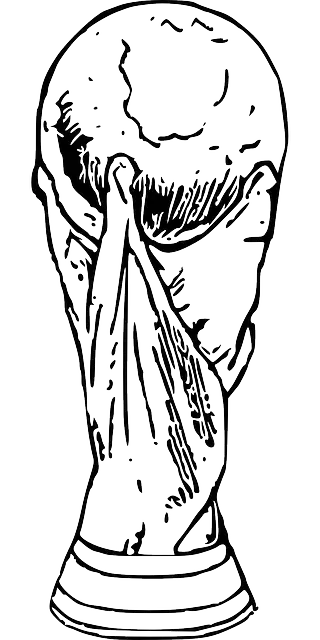Return to Work (RTW) programs prioritize employee well-being through industrial hygiene practices, including hazard recognition and assessment and exposure monitoring. These strategies enable targeted interventions for a safe and gradual reintegration process, adhering to occupational safety standards. By meticulously identifying and evaluating workplace risks, RTW initiatives can implement control measures like improved ventilation and PPE, fostering a healthier work environment and enhancing employee productivity.
Return to work programs are essential for a smooth transition of employees back into the office or workplace after an absence. This comprehensive guide delves into the intricacies of designing and implementing effective strategies. We explore key components such as industrial hygiene, hazard recognition and assessment, and exposure monitoring techniques to ensure a safe environment. By understanding these elements, organizations can successfully manage risks and foster a healthy return to work for their employees.
- Understanding Return to Work Programs: A Comprehensive Overview
- Industrial Hygiene: Ensuring a Safe Environment for Employees
- Hazard Recognition and Assessment: Identifying Potential Risks
- Exposure Monitoring Techniques for Effective Risk Management
- Strategies for Successful Implementation of Return-to-Work Programs
- Case Studies: Real-World Examples of Successful Return to Work Initiatives
Understanding Return to Work Programs: A Comprehensive Overview
Return to Work (RTW) programs are designed to facilitate a safe and gradual reintegration of employees into their work environments after an absence due to illness, injury, or other personal circumstances. These programs play a pivotal role in ensuring employee well-being and productivity while adhering to occupational health and safety standards. At the heart of effective RTW initiatives lies industrial hygiene, which involves identifying and mitigating risks within the workplace.
A key aspect of RTW management is hazard recognition and assessment. This process entails meticulously scrutinizing work tasks, environments, and potential stressors to identify hazards that could impact employees’ health. Once recognized, these hazards are evaluated for severity and likelihood of exposure. Exposure monitoring is a critical tool in this evaluation, helping to quantify the levels of hazardous substances or conditions to which workers may be exposed. By employing such strategies, RTW programs can implement targeted interventions to minimize risks and create a supportive environment that facilitates a successful transition back to work.
Industrial Hygiene: Ensuring a Safe Environment for Employees
Returning to work after a prolonged absence or during a pandemic requires careful planning to ensure a safe environment for employees. Industrial hygiene plays a pivotal role in this regard, focusing on hazard recognition and assessment to create a healthy workplace. It involves identifying potential risks, such as biological agents, chemical substances, or ergonomic factors, that may have increased or changed over the closure period.
Effective industrial hygiene practices include regular exposure monitoring to measure employee contact with hazardous materials or conditions. This data helps in implementing appropriate control measures, like improving ventilation, providing personal protective equipment (PPE), or adjusting work procedures, thereby fostering a safer and healthier return-to-work experience.
Hazard Recognition and Assessment: Identifying Potential Risks
Return to work programs should always prioritize hazard recognition and assessment as a foundational step in ensuring employee safety. This process involves meticulously identifying and evaluating potential risks within the workplace, with a focus on industrial hygiene. By conducting thorough inspections and consulting with experts, employers can uncover hidden hazards that might go unnoticed by employees. These could range from chemical exposures to ergonomic issues, or even noise pollution, each requiring specific mitigation strategies.
Effective hazard recognition involves not just identifying problems but also understanding their severity and the likelihood of exposure. Exposure monitoring plays a crucial role here, helping to quantify and qualify employee contact with hazardous substances. This data is invaluable for implementing appropriate controls, such as improved ventilation systems or the adoption of safer work practices, ultimately enhancing industrial hygiene standards and creating a healthier work environment.
Exposure Monitoring Techniques for Effective Risk Management
In the context of return-to-work programs, effective risk management hinges on robust exposure monitoring techniques. Industrial hygiene professionals play a pivotal role in identifying and assessing hazards within work environments, ensuring employee safety and health. By employing advanced methods like detailed inspections, sampling, and biospecimen analysis, these experts can quantify and qualify potential risks associated with various job tasks and materials. This holistic approach allows for the implementation of targeted interventions to minimize or eliminate workplace hazards.
Moreover, continuous exposure monitoring facilitates proactive management. Regular data collection and assessment enable employers to track worker exposures over time, identify trends, and take corrective actions before adverse health effects manifest. Integrating hazard recognition and assessment into daily operations ensures a dynamic risk management strategy, aligning with the evolving nature of work environments and protective standards in industrial hygiene.
Strategies for Successful Implementation of Return-to-Work Programs
Implementing effective return-to-work programs requires a strategic approach that prioritizes employee safety and well-being. Firstly, conducting thorough hazard recognition and assessment is paramount. This involves identifying potential risks specific to each worker’s role and tasks, ensuring all relevant hazards are accounted for. Industrial hygiene plays a pivotal role here by evaluating the work environment, including exposure monitoring, to measure and mitigate risks associated with various factors like chemical substances, noise, or ergonomic issues.
A structured plan should then be devised to address these hazards. This includes implementing control measures, providing appropriate personal protective equipment (PPE), offering comprehensive training on safety protocols, and establishing clear communication channels for ongoing feedback and adjustments. Regular reviews of the program’s effectiveness are essential to guarantee its success and adaptability to evolving workplace conditions.
Case Studies: Real-World Examples of Successful Return to Work Initiatives
Return to work programs have gained significant importance in recent years as organizations look for effective strategies to bring employees back safely after periods of absence due to illness or injury. Real-world examples, or case studies, illustrate successful initiatives that emphasize industrial hygiene and proactive measures. For instance, a manufacturing company implemented a comprehensive program focusing on hazard recognition and assessment. They conducted thorough inspections and established robust exposure monitoring systems to identify and mitigate risks associated with various job tasks. This initiative not only improved employee safety but also enhanced morale by fostering an environment where every individual’s well-being was prioritized.
Moreover, this case study highlights the power of tailored solutions. The company customized their program to accommodate unique production processes, ensuring that specific hazards were addressed appropriately. Regular training sessions on industrial hygiene practices and proper use of personal protective equipment (PPE) were conducted, empowering employees with knowledge to actively participate in their safety. As a result, the company experienced a notable decrease in work-related incidents and a higher level of employee satisfaction during the return-to-work transition.


